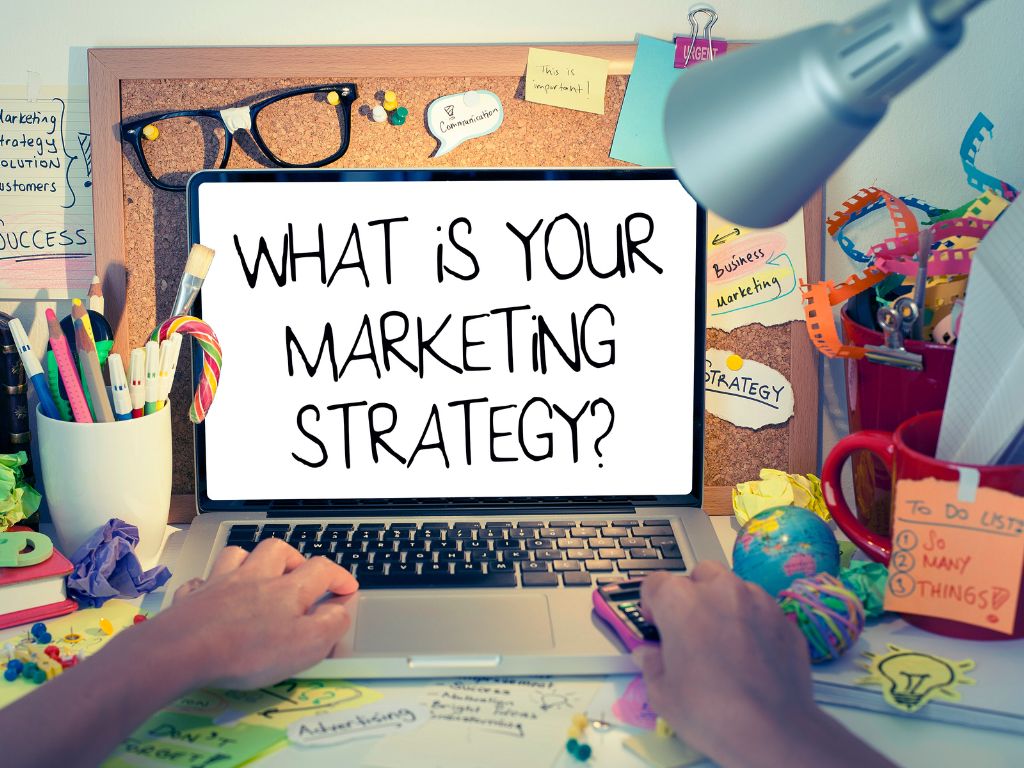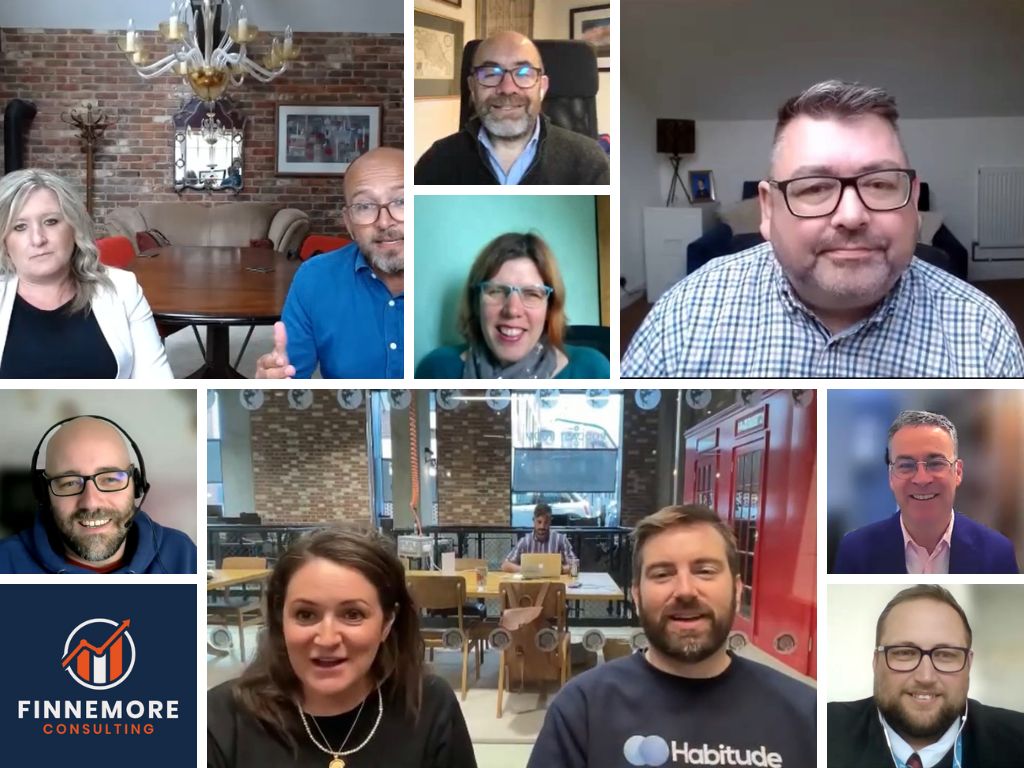Leveraging Customer Testimonials: Your Secret Weapon in Edtech



When you’re reaching out to people in the edtech field, it’s crucial to get your message right. Here’s a straightforward four-step plan to help you write emails and messages that hit the mark:
1. Understand and acknowledge their problems
Start by showing that you get what they’re going through and acknowledge the challenges they face in education or technology. This helps build trust and shows you’re genuinely interested in helping them.
2. Explain how you can help
Next, explain how your Edtech solution can solve their problems. Keep it simple, focus on the benefits, and avoid using technical language that might confuse them. Be clear about how your solution can make their lives easier.
3. Share proof of success
Back up your claims with real evidence. Share stories or data that show how your solution has helped others like them. This helps build credibility and makes your message more convincing.
4. Ask them to take action
Finally, tell them what you want them to do next. Whether it’s trying out your product or scheduling a demo, make it easy for them to take the next step. Be direct and clear about what you’re asking for.
The key is to keep it short, don’t over-explain, and make it about them and not you!

Creating a Marketing Strategy can feel complicated but it can essentially be boiled down into three stages:
In the first stage (the awareness stage) you’re literally just trying to make potential customers aware that you exist.
You’ve got a stellar product or service, but guess what? Nobody knows about it. That’s where the awareness stage comes into play. This is your chance to shout from the rooftops (metaphorically, of course) and let the world know that you exist.
But how do you do that? Well, it’s all about getting your name out there. Think social media campaigns, content marketing, and good old-fashioned networking. The goal here is simple: make potential customers aware of your presence in the market.
Remember, Rome wasn’t built in a day, and neither is brand awareness. It takes time and consistent effort to get noticed, so don’t get discouraged if you don’t see results overnight.
In the second stage (the consideration stage) you have to convince your customers to buy from you over your competition.
Okay, so you’ve piqued the interest of your target audience. Now what? It’s time to convince them that your offering is the best thing since sliced bread (or avocado toast, if that’s more your style).
This is where the consideration stage comes into play. Your potential customers are weighing their options, comparing you to your competitors, and trying to decide who to give their budget to.
But here’s the thing: it’s not just about having a killer product or service. It’s also about the experience you provide. Put yourself in your customers’ shoes for a moment. Would you rather buy from a company that treats you like just another number, or one that goes above and beyond to make you feel valued?
Customer experience is key. So don’t just focus on showcasing what you’re selling; focus on how you’re selling it. It makes all the difference.
The third stage (the retention stage) involves building community and convincing your customer to purchase again.
The retention stage is all about keeping your customers coming back for more. Why? Because repeat customers are the lifeblood of any business. Not only do they contribute to your bottom line, but they also serve as brand ambassadors, spreading the word and bringing new customers into the fold.
So how do you keep them coming back for more? Build a sense of community. Make your customers feel like they’re part of something bigger than themselves. Whether it’s through loyalty programs, exclusive offers, or simply engaging with them on social media, show them that you appreciate their business and value their loyalty.
Remember, a happy customer is a loyal customer. So don’t just focus on making the sale; focus on building relationships that last a lifetime.
These are the basic three stages you need to consider when creating your marketing strategy. Of course, there are tactics and activities that need to be planned and actioned to go with it but, strategically, this is a great blueprint.
Does your Marketing Strategy cover these three stages?

If you’re losing sales then it’s usually down to these very basic reasons (despite what sales gurus might tell you!):
1. You’re missing the mark on value.
If what you’re offering doesn’t solve a problem or make life easier for your customers, they’re not going to buy. It’s as simple as that.
2. You’re not really listening.
Ever been on the phone with a salesperson who just talks at you? Not fun. Listening to what the customer needs is the first step to making a sale.
3. You’re jumping the gun.
Nobody likes feeling rushed. Pushing for a sale before you’ve built any kind of relationship is a surefire way to turn people off.
4. You’re wasting time on dead ends
Not all leads are worth pursuing. Learn to spot the ones that are just going to waste your time.
5. You’re ignoring objections
Brushing off concerns instead of addressing them only makes the customer more hesitant. Take objections seriously and work through them.
6. You’re forgetting to follow up
Out of sight, out of mind. Don’t let prospects forget about you—follow up and stay on their radar.
7. You’re making things complicated
Keep it simple. A confusing sales process is a sure way to lose customers.
8. You’re pretending competitors don’t exist.
Know your enemy. No solution is so unique that it doesn’t have any competition. Ignoring the competition won’t make them go away—it’ll just leave you in the dust.
9. You’re blending in instead of standing out.
If you’re just another fish in the sea, why should anyone choose you? Find your unique selling point and shout it from the rooftops.
10. You’re skipping the relationship-building part.
People buy from people they like. Take the time to build relationships—it’ll pay off in the long run.
Losing sales feels awful but it’s not the end of the world. Learn from your mistakes, tweak your approach, and carefully rebuild your pipeline being mindful of the above.
Is there anything I’ve missed? What would you add?
#sales #selling #edtech #pipeline #relationships #closing #saleprocess #edtech

Whether you’re navigating interviews, Q&A sessions, or engaging in conversations with stakeholders, mastering the art of media training can be the key to success as it keeps the focus ON the things you want to talk about and AWAY from those you don’t.
Here are three key tips I learnt in media training to elevate your communication game:
1. Know your North Star
The key to a good Q&A is don’t answer the question you’re asked, answer the question you wish you were asked. If there’s a crucial message you want to get across, that’s your North Star. Practice answering questions that lead you back there.
Then if they keep commenting on something trivial or something you don’t know well, you can bring the conversation back to what matters.
2. Don’t speak for others.
If somebody says “You must be shocked by your competitors’ collapse” don’t take the bait. Instead say you’ll let that person comment on their situation, and then bring the conversation back to your area of focus.
3. Have command of two or three recent statistics that support your perspective.
You don’t need to be a walking encyclopaedia, but a few stats are very compelling. Make sure they are no more than two or three years old, and that you can cite your sources.
What More Can You Do?
While the strategies above are indispensable, there’s always room for refinement. Here are a few additional tips to enhance your performance during Q&A sessions and interviews:
4. Active Listening: Pay close attention to the questions posed to you. Understanding the intent behind each query allows you to tailor your responses more effectively.
5. Authenticity: Stay true to your brand and values. Authenticity resonates with audiences far more than rehearsed or scripted responses.
6. Bridge Techniques: Master the art of bridging—seamlessly transitioning from the question asked to the point you wish to convey. This technique allows you to maintain control over the conversation.
7. Practice, Practice, Practice: Like any skill, effective communication requires practice. Engage in mock interviews, seek feedback, and continuously refine your approach.
By harnessing these insights and refining your communication skills, you’ll be better equipped to give interviews which drive your vision forward with clarity and conviction.
What else would you add? What do you find helps when you’re involved in Q&A sessions or interviews?

Our next #FinnemoreFireside is with Ben McGowan, Head of IT and Digital at Ted Wragg Multi Academy Trust and Simon Denham, a Procurement & Strategic Sourcing Specialist they worked with on their recent procurement of an MIS for the Trust.
I’ve known Ben for many years from his time at Scomis, and I was lucky enough to work with him at Capita for a short period. A couple of years ago he took up his current role leading the IT and digital strategy at Ted Wragg Trust so when the Trust was looking at MIS options back in 2022, I was delighted to be asked to give my thoughts on “the art of the possible” when it comes to planning for the future needs of the Trust and what MIS can help you achieve. It was there I met Simon Denham as Ted Wragg MAT had engaged him to advise on the procurement process to ensure it was thorough, compliant, and achieved the very best for the Trust and academies.
This fireside chat aims to share insights on procurement in the education sector, particularly regarding Management Information Systems (MIS), so if MIS procurement is your thing, or is on the horizon for your school(s), Trust or academies, then this conversation is for you.
In it, we discuss, amongst other things:
————————————————————————————————
We’ve been lucky enough to have worked with most of the maintained MIS suppliers including SIMS (then owned by Capita), Arbor, IRIS Ed:gen, Pupil Asset, and, at the time of writing, working with Bromcom as they grow their user base across the UK.
We’ve recorded tons more #FinnemoreFireside chats on the topic of MIS with MATs, school leaders, support teams, suppliers and independent consultants which you can find here or subscribe to our You Tube channel for regular updates.
Other brilliant free, independent resources we’d recommend you take a look at include WhichMIS and BringMoreData. We also run a LinkedIn group ‘The Future of MIS’ which seeks to understand the new role of MIS in schools and explore what it will look like in the future – come and join the conversation 🙂

Are you guilty of bad love?
Bad love: when your affection for customers is solely based on the revenue they bring. Ask yourself, if they didn’t contribute financially, would you still talk to them, believe in them or invest in them? Is it the money you love, or the customer?
Good love: genuinely caring for your customers, regardless of their financial value. Even if the relationship ends, your business gains in reputation and brand loyalty. You become the go-to for recommendations, known for going above and beyond.
Love your customers for who they are, not just what they bring financially. Strong relationships lead to happier outcomes for everyone involved.
💖 Happy Valentine’s Day! 💖

If, like us, MIS is your thing then you’ll have recently seen the many posts and conversations regarding ESS’ new rules on the ways SIMS schools are allowed to migrate their data.
Even if you’re not an MIS user, you’ll likely have seen the news around it as one of ESS SIMS’ main competitors, Bromcom, has taken a serious stand in defence of its schools and the thousands of schools who plan to switch MIS in the future by pursuing the issue with the Competition and Markets Authority (CMA) and also initiating injunction proceedings to halt ESS’ legal threats to schools, support centres and MIS suppliers regarding migration process. More on this below, but how did this all start?
In late December 2023, ESS SIMS suddenly announced you can no longer send a database backup file to your new MIS supplier when you want to switch systems.
ESS has set out their reasons for making this decision and there’s lots of detailed guidance on their website around what is and isn’t allowed, plus the approved migration methods left available to schools if they want to move.
Sending a database backup file has been industry standard practice for at least 10 years and has been used by schools, support teams and suppliers thousands of times to help ensure a smooth transition. Understandably, the whole sector is now trying to identify ways of ensuring schools can migrate their data in a way which is as safe and efficient as the industry-standard method.
Based on some of the conversations we had at Bett, there’s additional frustration amongst schools and support teams: following the CMA investigation into 3-year contracts and whether or not schools had been given enough notice, as part of their submission to the Adjudicator, ESS gave details around the process of switching MIS and included the example of data being copied across from a backup of the school’s SIMS database. So some people are surprised that ESS has now said this has only recently come to their attention, and are sad to learn that this method can no longer be used (this post by Chris Kirk has more info).
In their documentation, ESS points to the permitted alternatives. We’ve heard from many schools on this and some of the challenges they’re finding with these methods include:
We’ve been looking to identify alternate ways which are equally as quick and migrate the same amount of data so we also asked the LinkedIn community for advice on this plus any useful resources (you can check out the whole thread here). So far, nothing comparable to the database backup/ .BAK file method has come up yet but we will share anything we find.
The upshot of all this is that the migration process when moving away from SIMS is likely to now be more complicated, to the point where there’s a real danger that schools are opting not to move. So, what can be done?
Bromcom has led the charge in acting to protect its switching schools in that, should ESS initiate any legal action against those schools, they have said that they as a company will apply to join the proceedings and will cover approved legal costs for those schools. They are encouraging schools to continue with the switching journey and are providing further reassurance as they’ve also said that, in the unlikely event that a damages payment to ESS materialises, they will take responsibility for this payment.
Arbor has followed suit and done something similar by creating a Switching Guarantee where they have said they will take legal responsibility when schools transfer data to them via backup file. It’s likely that the other MIS suppliers will also be putting plans in place to help schools migrate as safely and efficiently as possible. We spoke with them all in and around Bett, and making sure schools continue with their switching journey was a high priority for everyone (we’d recommend getting in touch with the suppliers directly for all the info).
No, these problems are unlikely to exist if ever you choose to move away from your cloud MIS supplier as there is good, publicly available information on offboarding and end-of-contract processes for all cloud MIS listed on the G-cloud. Even if you don’t intend to use G-cloud to procure, it’s worth looking at the MIS profiles there for transparent information.
We’ve included links below to the main two challengers (these two suppliers also provide a complete copy of the database to schools when they move away) and you’ll be able to find this information for all solutions listed on the G-cloud as it is one of the required answers when submitting a listing.
Bromcom – https://www.applytosupply.digitalmarketplace.service.gov.uk/g-cloud/services/745510438906746
Arbor – https://www.applytosupply.digitalmarketplace.service.gov.uk/g-cloud/services/907086007758171
Ultimately, schools just want to exercise their right to their data and to select software of their choosing. There are still ways to migrate data out of SIMS and MIS suppliers are doing everything in their power to help schools with their move.
And if you do find yourself on the end of a legal challenge from ESS, the two biggest cloud MIS suppliers have made statements about how they will support schools.
Finally, in a major step, Bromcom is pursuing the issue with the Competition and Markets Authority (CMA) and applying to the High Court for an injunction to halt what they consider to be anti-competitive behaviour by ESS. Their received legal advice is that schools are not in breach of contract by providing SIMS SQL backups so Bromcom is initiating injunction proceedings to halt ESS’ legal threats to schools, support centres and MIS suppliers regarding the migration process. Watch this space!
It will be interesting to see what happens next, but we really hope that schools don’t feel they can no longer proceed with their plans. If you’re in the process of switching or are considering switching in the future, definitely reach out to prospective new suppliers and ask them to talk you through the migration process. They will be more than willing to help 😊
————————————————————————————————
We’ve been lucky enough to have worked with most of the maintained MIS suppliers including SIMS (then owned by Capita), Arbor, IRIS Ed:gen, Pupil Asset, and, at the time of writing, working with Bromcom as they grow their user base across the UK.
We’ve recorded tons more #FinnemoreFireside chats on the topic of MIS with MATs, school leaders, support teams, suppliers and independent consultants which you can find here or subscribe to our You Tube channel for regular updates.
Other brilliant free, independent resources we’d recommend you take a look at include WhichMIS and BringMoreData, We also run a LinkedIn group ‘The Future of MIS’ which seeks to understand the new role of MIS in schools and explore what it will look like in the future – come and join the conversation 🙂

We’ve been privileged to speak with even more edtech and industry thought leaders throughout 2023 as part of our #FinnemoreFireside chats, and the insight they continue to provide to us and our community is invaluable.
Thanks to Catherine Tallis of HFL Education, a long-standing provider of MIS support to schools, for discussing how support teams must adapt as the MIS market continues to evolve.
Thanks to Derek Hills from Ark for sharing your views on where you see AI fitting into technology budgets and the broader education landscape, and what the future of MIS might be.
It’s great to speak with thought leaders from government so thank you to Edtech NED, legislator, schools and education expert Jim Knight for your thoughts on the disconnect between the education and labour market, and the need for a school system which truly meets the needs of learners, communities and employers.
Thank you to Chris Kirk of CJK Associates Ltd for your insight into MAT’s needs in terms of vision, strategy, operating models and governance, and what this means for suppliers – both now and in the future.
Our chat with Lyndon Stickley and Sam Curtis of iplicit is essential listening for everyone with an interest in finance as they discuss the importance of change in the education sector and the need for flexibility and adaptability in finance and management systems
Thank you to Ollie Burnett from the school support team in Coventry for talking to us about all the valuable ways they support their schools, including helping them procure and migrate to their new MIS as a group earlier this year.
Finally, we were delighted to speak with Izzi Dorrian and Ed Butcher, founders of the brilliant Habitude workflow platform, for an insightful discussion on the evolving landscape of MATs, the importance of infrastructure, and the need for a clear vision.
As always, we’ve thoroughly enjoyed making the series and are looking forward to a fantastic 2024!
Have a great Christmas break
Best wishes from Sarah & Nick
——————————————————————————-
Subscribe to our YouTube channel and get notified when new videos go live, or join our mailing list for tips on future-proofing, MIS news, growth strategies, and much more.

The pursuit of perfection is a double-edged sword. Perfectionism is just procrastination in disguise – and procrastination will kill a product release stone dead.
You see this happen all the time in software, and unfortunately, Edtech is no exception. Companies aim to only release a 100% perfect product because they fall into one of these traps:
1. They honestly believe they can create an amazing solution through ‘thinking things up’ in their office/bedroom/ivory tower. What they need to do is get their solution out into the real world to see if it meets the customers’ needs.
2. They’re scared of messing up so spend a lot of time strategizing to try and ensure they don’t fail at all.
The truth is that perfectionism is bad for business. Waiting endlessly for the perfect solution not only hinders progress but also opens the door for competitors to gain an edge.
The Pitfall of Perfection: Businesses risk losing valuable time that could be spent gaining insights and refining their products by only striving for perfection. While it’s natural to want to deliver excellence, the reality is that waiting for perfection allows competitors to swoop in, gather feedback, make improvements, and potentially dominate the market.
The MVP Advantage: Enter the Minimum Viable Product (MVP). Instead of aiming for perfection behind closed doors, releasing an MVP allows you to bring your solution to market quickly. This initial version may not be flawless, but it opens the channels for crucial customer feedback.
Listening to Your Customers: The beauty of the MVP approach lies in its inherent openness to customer input. Launching a basic version of your product invites users to share their experiences, preferences, and suggestions. Your customers become invaluable collaborators, guiding the iterative process and steering your product towards perfection based on real-world needs.
Competitive Edge Through Iteration: While perfectionism breeds stagnation, embracing an iterative approach propels your business forward. By consistently releasing improved versions based on customer feedback, you stay ahead of the competition. Your responsiveness to user needs positions you as a dynamic force in the market, ready to adapt and deliver what customers truly want.
Embrace imperfection, release your MVP, and let your customers be the architects of perfection!
Customer testimonials are one of THE biggest marketing tools you can have in your kitbag when it comes to selling in the education sector as peer-to-peer advocacy is everything.
Here’s why you should ask for them and share them:
1. They build trust.
Testimonials from satisfied customers serve as social proof, building trust and credibility in your brand. Potential customers are more likely to trust the experiences of their peers.
2. They help you win new business.
Positive testimonials showcase your product’s value proposition and demonstrate real-world benefits. They can be powerful tools in persuading potential customers to choose your EdTech solution over competitors.
3. They help you retain customers.
Happy customers are your best advocates. Sharing their positive experiences not only reinforces their loyalty but also encourages retention by highlighting the value your platform delivers.
If you don’t already, start gathering and sharing customer testimonials to increase brand presence and drive growth.
It’s #testimonialtuesday today so why not share one in the comments straight away! 👇